The Ranga Mandapa or Maha Mantapa of the Vijaya Vittala temple, Hampi, India, part of the UNESCO World Heritage site of the Hampi Group of Monuments was bathed in a golden glow. Birds fluttered and chirped as they flew hurriedly to reach their homes before the earth was enveloped in darkness. Shanknad or the primordial sound of the blowing of a conch shell smote the air. As if on cue the 56 columns of the Ranga Mantapa erupted in a delightful symphony encompassing the Saptaswara’s or the seven notes of the musical scale. The air was filled with sweet music.
The hypnotic sounds of the Damaru played hide and seek with notes of the Kerala Mridangam, while the sweet notes of the Jaltarang scaled the heights in tandem with the sounds of the Tabla. The divine notes of the Veena matched notes with the staccato sounds of the Ghatam. The surroundings of the Vijaya Vittala temple resonated with music that assumed divine proportions.
The enchanting music however was not emanating from musical instruments. There was no Saptaswara, Panchtala, Damaru, Kerala Mridangam, Jaltarang, Mridanga, Ghanta, Ghatam, Veena, Tabla, or Shankha. Skilled musicians bedecked in finery, head crowned with brightly decorated turbans, manned the 56 columns, and with a gentle and magical tapping of the pillars, created the musical notes of different musical instruments. Each column gave birth to the sounds of a different musical instrument.
And then, in the centre of the Mantapa, the sound of anklets emanated as an ethereal fairy-like figure started dancing to the music. As she danced, she seemed one with the music and time seemed to have come to a standstill. The birds flying home paused in mid-air to have a glance at the dance and musical extravaganza, even the sun stopped for a moment on his trajectory towards the western horizon, such, was the enthralling spectacle at the Ranga Mantapa of the Vijaya Vittala Temple of Hampi, Karnataka, India.
We were at the Vijaya Vittala temple in Hampi, India, standing before the Maha Mandapa, staring at the famous musical pillars, and our senses had flown on the wings of imagination. For a moment in our imagination, we had experienced a slice of what life must have been like during the golden era of the Vijayanagara Empire.
Read on to know more about the architectural marvels of the Vijaya Vittala Temple Hampi including of course the mystery of the musical pillars of Hampi.
Table of Contents
Guide To Vijaya Vittala Temple Hampi, India
The Vitthala temple is the most exquisitely ornate structure on the site and represents the culmination of Vijayanagara temple architecture.
This is how the Vijaya Vitthala temple is described in the UNESCO World Heritage site listing. The temple is indeed in many ways the zenith of the architectural splendour of Hampi.
Brief History of Vijaya Vitthala Temple, Hampi, Karnataka, India
The temple which is believed to have been built during the 15th century was constantly embellished by successive kings and in fact, may have been still incomplete when the entire city of Hampi was destroyed, looted, and desecrated for six months by the armies of a coalition of Muslim Sultanates in 1565.
The construction of the temple is credited to Devaraya II who ruled between 1422 to 1446 AD. A 100 pillared pavilion which is located towards the southwest of the main temple, as well as the eastern and northern gates, are believed to have been constructed by Krishhnadevaraya and his queens.
The destruction reduced the glorious city, believed to have been one of the richest cities of the medieval world to ruins. Today the Vijaya Vittala temple is one of about 1600 ruined monuments of Hampi.
The Layout of The Vijaya Vitthala Temple
The Vijaya Vittala temple is built on an East-West axis and is built in the Dravidian temple architectural style. It is a huge complex of halls, minor shrines, and the main temple, all located in a courtyard that spans an area of 500 X 300 feet. The complex is enclosed by a relatively low wall made of stone slabs. Access to the temple complex is through three huge Gopurams, which are of course a characteristic of the Dravidian style of temple architecture.
The main entrance is through the Gopuram on the eastern side. There are two other Gopurams on the northern and southern sides. The main architectural features of the Vijaya Vittala Temple ruins include the Garba Griha, the Maha Mandapa, the Kalyan Mandapa, and the iconic Stone Chariot, apart from the collonaded market, that lies just outside the temple campus.
The Stone Chariot of Vijaya Vittala Temple in Hampi
The most iconic images for Vittala Temple that you will find on the internet are those of the stone chariot of Hampi. In fact, the stone chariot also found its way to the 50 Rs. note in 2017. The chariot grabs your attention as soon as you cross the threshold of the eastern entrance of the Vijaya Vitthala temple.
But your first glimpse of this remarkable example of Vittala temple architecture is its rear, as it faces towards the west, where stands the main temple dedicated to a form of Vishnu known as Vitthala or Vithoba or Panduranga.
It is interesting to note that the stone chariot is actually a small Garuda shrine. Garuda is the vehicle of Vishnu. The stone chariot with the image of Garuda stands vigil in front of the temple to Vittala in lieu of the characteristic Garuda Sthambha.
The chariot has four wheels and is similar to actual chariots or Raths that were used for taking idols of deities in procession around the temple. Contrary to popular belief the chariot is not made from a single rock, the genius of its sculptors have hidden the joints with great skill and hence the impression. The chariot like other parts of the temple must have been painted in vibrant colours using natural dyes in its heyday. Evidence of colour can be found to this day beneath the undercarriage of the chariot.
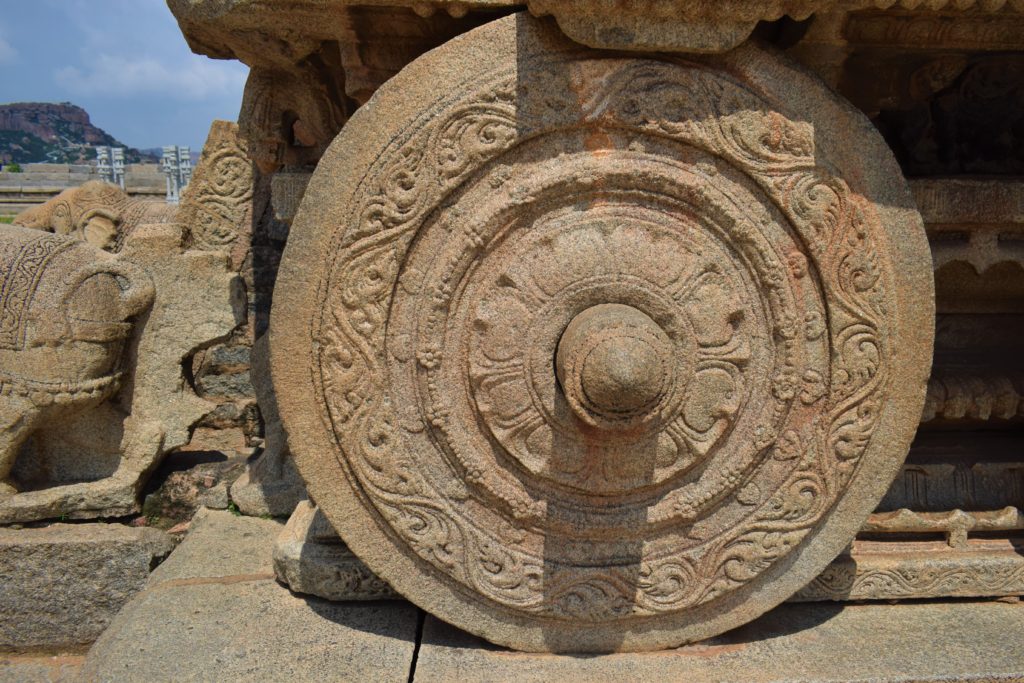
The original chariot had a conical gopuram-styled top which has been destroyed. It was drawn by two sculpted horses which too have been destroyed. Two sculpted elephants now stand in the place of the horses. Though it is not a moving stone chariot, it is believed that the chariot could move on its axis. The stone chariot of Hampi’s Vittala Temple seems to be a miniature of the massive Chariot shaped temple of Konark and similar in design to the stone chariots of the Pancha Ratha temples of Mahabalipuram. The stone chariot of Hampi has beautiful carvings on its outer walls and the wheels are decorated with floral motifs.
The stone chariot was not built with the original temple, it was built later in the 16th century by Krishnadevaraya after a visit to Konark where he saw the chariot shaped sun temple of Konark
The popularity of the magnificent stone chariot of Hampi is such that it has become vulnerable to the pressures of tourism. Irresponsible tourists even climb the fragile monument to pose for selfies and endanger it. The Stone Chariot has now been encircled by a physical barrier so that tourists can no longer get too close to it.
The Maha Mandapa or Sabha Mandapa of Vijaya Vitthala Temple
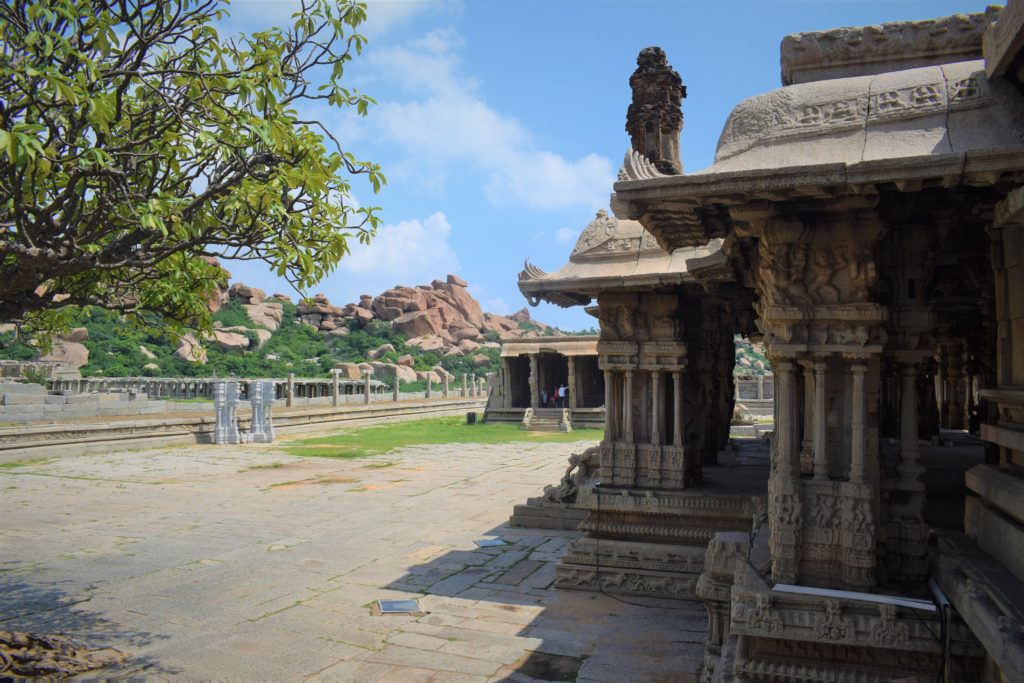
The Maha-Mantapa or the Sabha Mandapa stands in the centre of the rectangular courtyard and is directly facing the stone chariot and perfectly aligned with it on the central axis. The huge Sabha Mandapa leads to the Garbha Griha towards its rear.
The Sabha Mandapa is a huge pavilion whose roof is supported by massive columns which themselves are made up of a cluster of slender pillars. These columns are monolithic pillars that have been hewn out of single granite blocks and are the most notable feature of the Maha Mandapa. The pillars when tapped produce musical notes and hence they are also referred to as the Vittala Temple Musical Pillars or SAREGAMA pillars in popular parlance.
The Mystery of The Musical Pillars
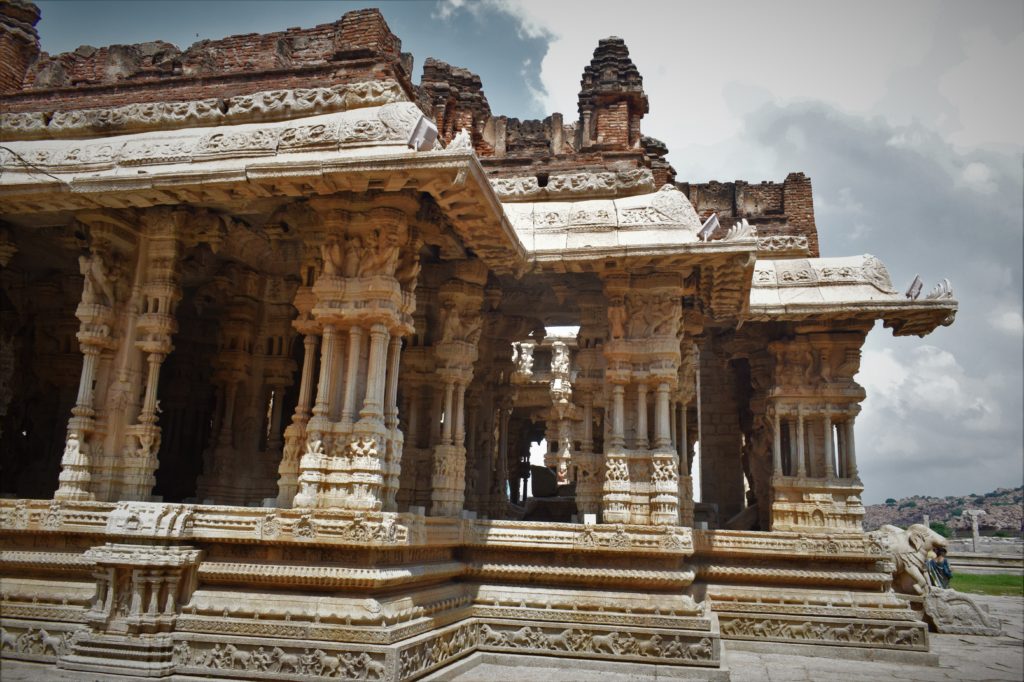
The Musical Pillars of the Vijaya Vittala Temple in Hampi are an enduring enigma. The pillars are one of the most fascinating and unsolved mysteries that the ancient temples of India have presented to mankind. It is believed that these pillars produced the musical notes of different instruments like Saptaswara, Panchtala, Damaru, Kerala Mridangam, Jaltarang, Mridanga, Ghanta, Ghatam, Veena, Tabla, or Shankha.
Earlier guides used to demonstrate the magical notes of the musical pillars by tapping them with their hands. Tourists too used to try their hand at creating music from these pillars. Fearing damage to the pillars, since many years the touching of these pillars has been banned by the ASI.
There has been many a study to decipher the secrets of the musical pillars. It has been established that the pillars are not hollow. It is also believed that a proportion of silica in the pillars may account for these musical sounds. It is believed that the sculptors of the musical pillars may have synthesized musical notes through mechanical means, and why not when these days music is being synthesized electronically. Whatever be the case, the musical pillars resonate a perpetual tribute to the sheer wizardry of its sculptors.
The Kalyan Mandapa of Vijaya Vitthala Temple
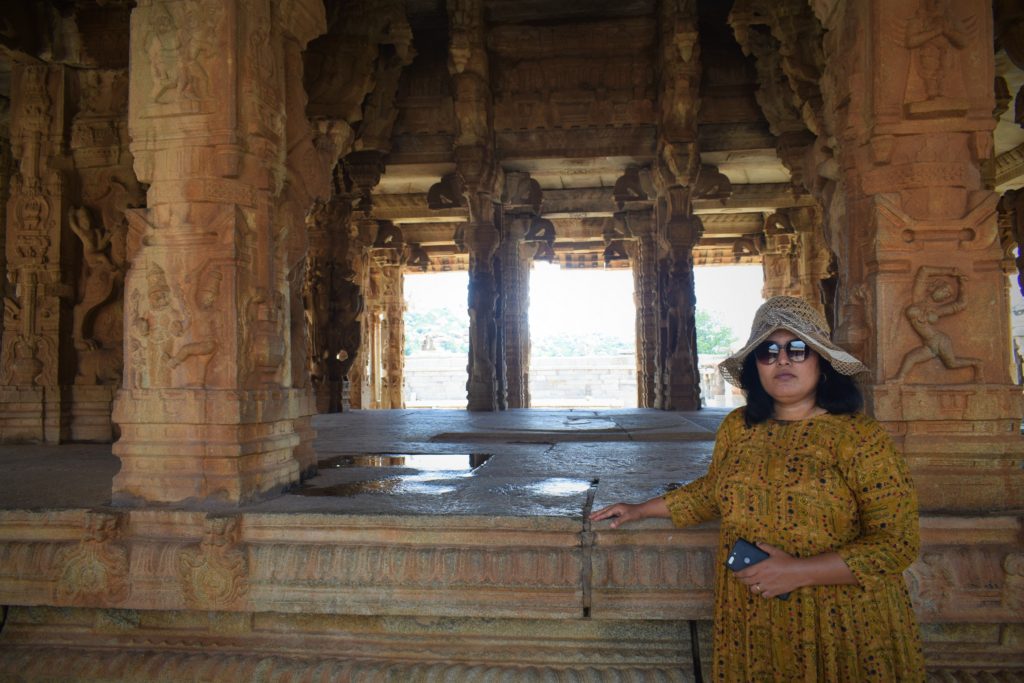
The Kalyana Mandapa is an ornate pavilion that was used for various celebrations and ceremonies including probably the symbolic marriage of the God and Goddess.
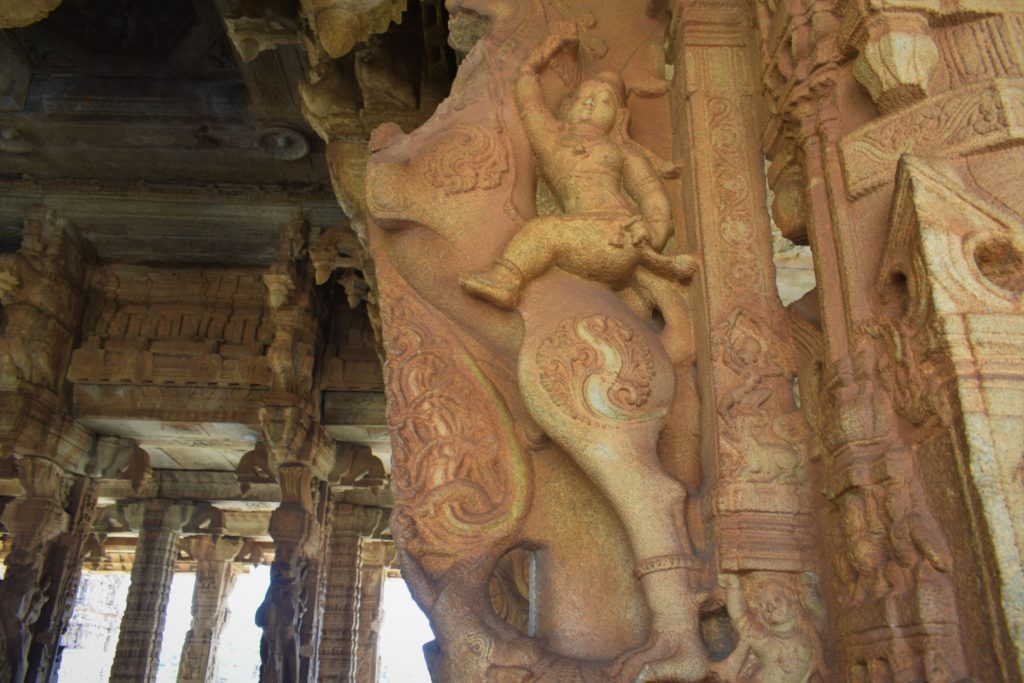
The Kalyana Mandapa is an ornate pavilion that was used for various celebrations and ceremonies including probably the symbolic marriage of the God and Goddess. The Kalyana Mandapa is studded with exquisitely carved Yali pillars. Yali’s are mythical creatures that are generally part elephant, part horse, and part lion. These Yalis adorning pillars are a characteristic of many south Indian temples including the beautiful Meenakshi Amman temple in Madurai and the Rameswaram temple.
The pillars of the Kalyana Mantapa also are carved with scenes from the Ramayana and depict different Gods and Goddesses and mythical creatures.
The Garbha Griha of Vijaya Vitthala Temple
The Garbha Griha or the sanctum of the Vijaya Vittala Temple is located in a straight line from the Stone Chariot behind the Sabha Mandapa. It can also be approached by a door reached by a flight of steps on the southern side.
The traditional guardsmen or Dwarapalakas of Vishna, Jaya, and Vijaya stand guard outside the entrance to the Garba Griha. However, what remains is the partially damaged statue of one of them.
The Garbagriha itself is empty and the idol of the deity missing. However, carvings found on the outer walls and also on the Gopuram do give an indication as to how the idol must have looked like.
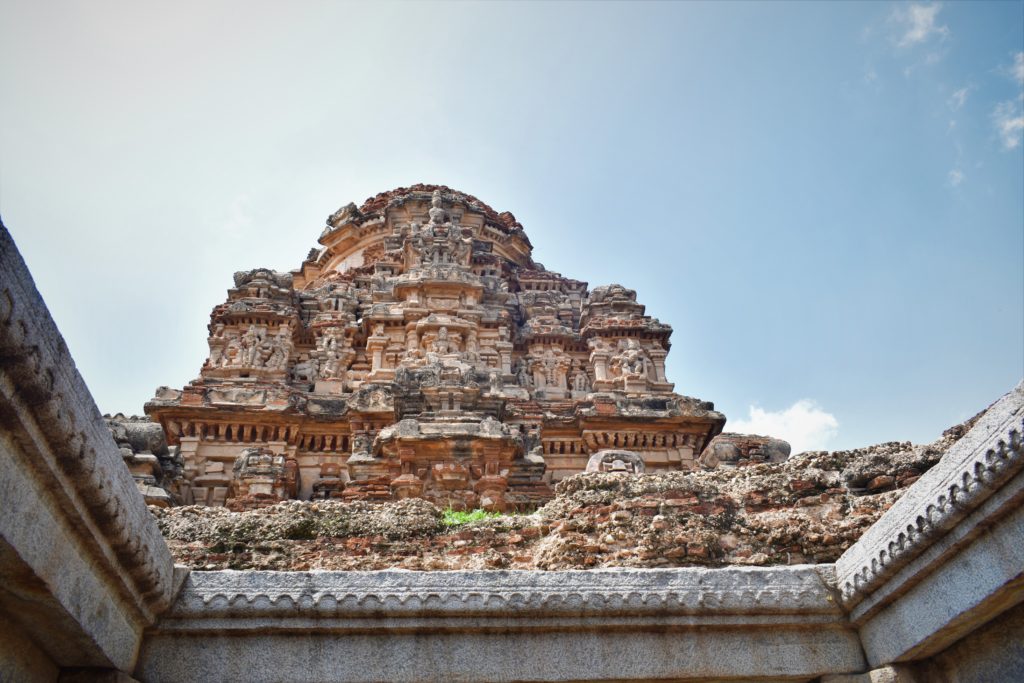
A Vimana bedecked with carvings of Vittala and other Gods and Goddesses rises above the Garbhagriha. There is a Pradakshina Patha or circumambulatory path around the sanctum which is semi-dark and is covered.

The outer walls of the sanctum are covered with Kumbha-Pankajas and other iconography associated with Lord Vishnu.
The Markets of Vijaya Vithala Temple | Hampi Bazar
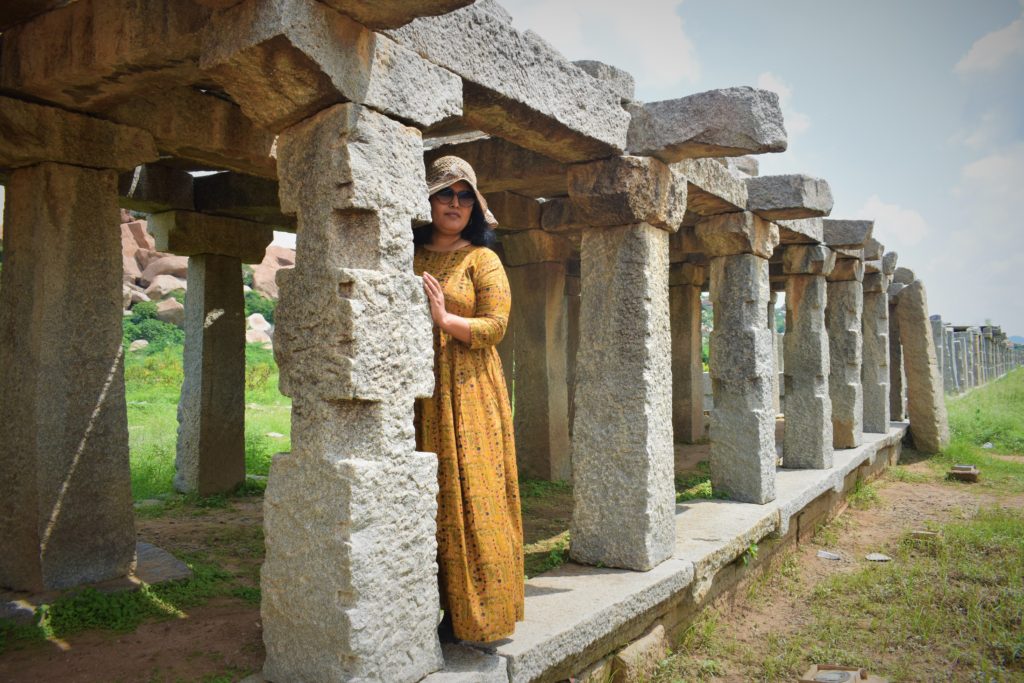
When you are at the Vijaya Vittala temple, you are sure to notice the long collonaded structure stretching out from near the eastern Gopuram for almost a kilometre, running parallel to the road leading to the temple. Similar structures can also be seen stretching towards the northern side running parallel to the outer wall of the temple. These structures are what remains of the once famous and bustling Hampi Bazar.
The jewelers sell publicly in the baazar pearls, rubies, emeralds and diamonds in this agreeable locality and in the king’s palace one sees numerous running streams and canals formed of chiseled stone, polished and smooth.
Abdur Razzak, Persian chronicler and ambassador at the court Deva Raya II
The Bazar outside the Vittala Temple is believed to have been the longest one stretching to almost a kilometre. In medieval times, Hampi was second only to Beijing and one of the largest cities of the world. It was a centre of trade and attracted traders from Portugal and Persia. The bare stone structures that stand silent and somnolent today once echoed to the excited haggling of traders. It is believed that horses, silks, gems, and various other precious stones were sold in these markets. The area around the temple was a city in itself and was known as Vitthalapura.
The grandeur of the Vijaya Vittala Temple during its heyday can only be imagined. Even the 150-year-old Frangipani tree that stands forlorn inside the temple campus has not seen the full splendour of one of the greatest temples built by Man to God, the Vijaya Vittala Temple.
Vijaya Vitthala Temple Video
Vijaya Vitthala Temple FAQ
What is the Vittala Temple Timings?
The Vijaya Vittala temple is open from 8.30 AM to 5 PM on all days.
Who Built Vijaya Vittala Temple?
The Vittala temple built by Devaraya II in the 15th century but has been enhanced by successive kings including Krishnadevaraya.
How old is the Vittala Temple Tree?
The ancient tree is believed to be over 150 years old.
Is there a ticket to visit Hampi Vittala Temple?
Yes, there is a ticket for entry to the Vijaya Vittala temple, there is a ticket counter in front of the temple where tickets can be purchased. The ticket would be valid for all the monuments of Hampi.
Is there Vijaya Vittala Temple Information In English available at the site?
Yes, there is a board in English which gives basic information about the history and architecture of the temple.
How To Get To Vittala Temple, Hampi
- The Vijaya Vittala temple is about 3 kilometres from the other famous temple of Hampi, the Virupaksha Temple
- No vehicles are allowed near the Hampi Vittala Temple, one needs to take an electric vehicle from the main road to reach the temple
- Hampi is situated in the southern Indian state of Karnataka
- Hampi is about 341 kilometres from the capital of Karnataka, Bangalore
- Hampi is around 12 kilometres from Hospet
- One can reach Hampi, by road, rail, or air
- The nearest airport to Hampi is the Jindal Vijaynagar Airport in Torangallu
- TruJet has a flight to Torangallu from Bangalore
Are you planning a trip to Hampi, to see the Vijaya Vittala Temple? You can book a cheap flight right here through TripAdvisor or Agoda or CheapAir or Cleartrip or Makemytrip or Priceline right here. if you are thinking of a road trip to Hampi from Bangalore or anywhere in India check out the rental car and bus options.
Where To Stay In Hampi

Hampi being a popular tourist site attracts quite a number of tourist footfalls. Hence there is no dearth of accommodation options in Hampi. Hotels in Hampi range from luxury resorts to budget hotels to hostels. On our last trip to Hampi, we stayed at the elegant and luxurious Hyatt Place Hampi which is right next door to the Vidyanagar Airport near Hampi. You can book Hyatt Place Hampi or any other hotel or resort in Hampi or Anegundi, right here.
If you are looking for the best hotels in Hampi/Anegundi to book, you can do that right here. You can book your hotel in Hampi through TripAdvisor or Cleartrip or Agoda or Makemytrip or Priceline conveniently right here!
| Click to book the best hotels in Anegundi, Karnataka, or best hotels in Hampi |
|---|
Hampi Tourism & Places To Visit
Hampi is a living museum of history and one can spend days exploring the over 1600 minor and major monuments that enthral visitors to the UNESCO World Heritage site. The historical sites of Badami, Pattadakal, and Aihole too are not very far from Hampi. The major monuments not to miss in Hampi are listed here.
- Virupaksha Temple
- Vittala Temple
- Hazar Rama Temple
- Lotus Mahal
- Achyutaraya Temple
- Hampi Bazaar
- Hemakuta Hill Temple Complex
- Elephant Stables
- Monuments and Attractions of Anegundi
Is Hampi on your mind? You can book package tours that will include the important places of interest You can plan your trip and book online places to visit in Anegundi/Hampi.
| Click here to know more and book Best Attractions in Hampi/Anegundi/Karnataka |
|---|
We hope you found our Vijaya Vittala temple blog interesting and informative. Do let us know your thoughts through the comments section, and do not forget to subscribe to our blog to be the first to know when we publish a new post. Also, keep updated with our stories by connecting with us on our social media channels.
Do You Love Traveling?
Do you want to know how to travel the world? We have put together a very useful travel resources page with best travel tips. Go check it out now.
Thanks for visiting our site Voyager – imvoyager.com and taking the time to read this post!
If you wish to collaborate/work with us then reach us at [email protected]
We’d love if you’d comment by sharing your thoughts on this post and share this post on social media and with your friends.
Follow our journey on our social media channels:
Facebook Twitter Instagram Pinterest YouTube
60+ Million Users Trust TripAdvisor With Their Travel Plans. Shouldn’t You?
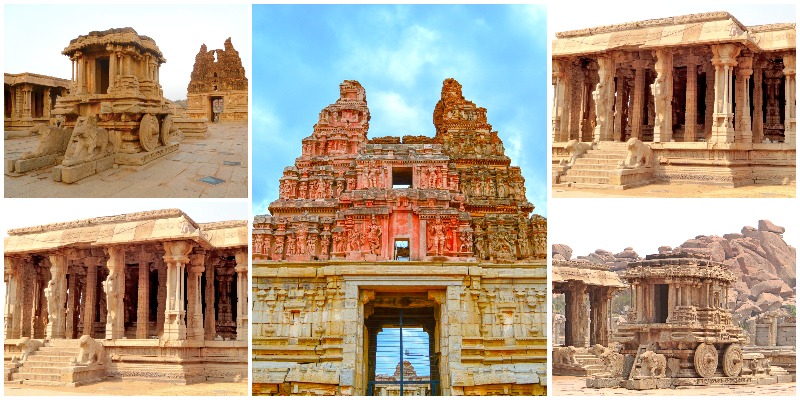
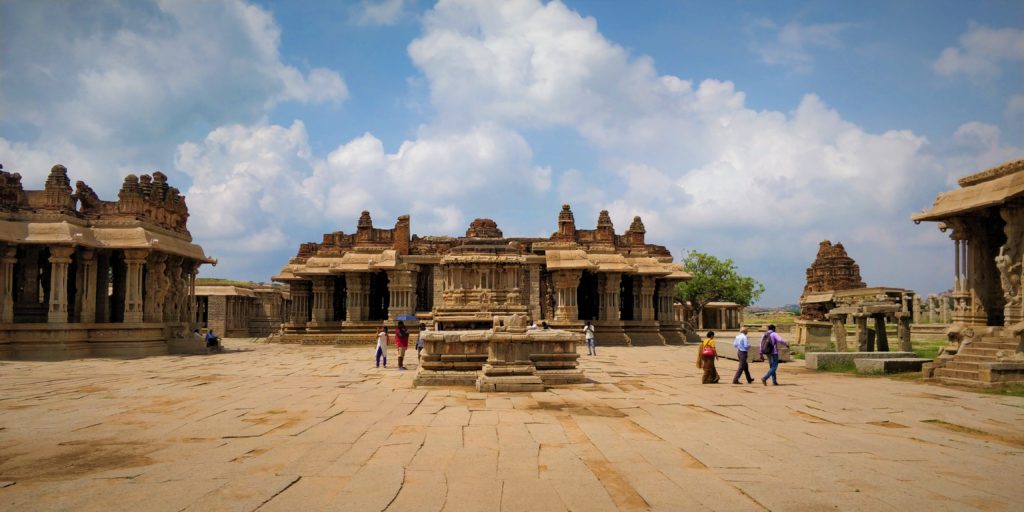

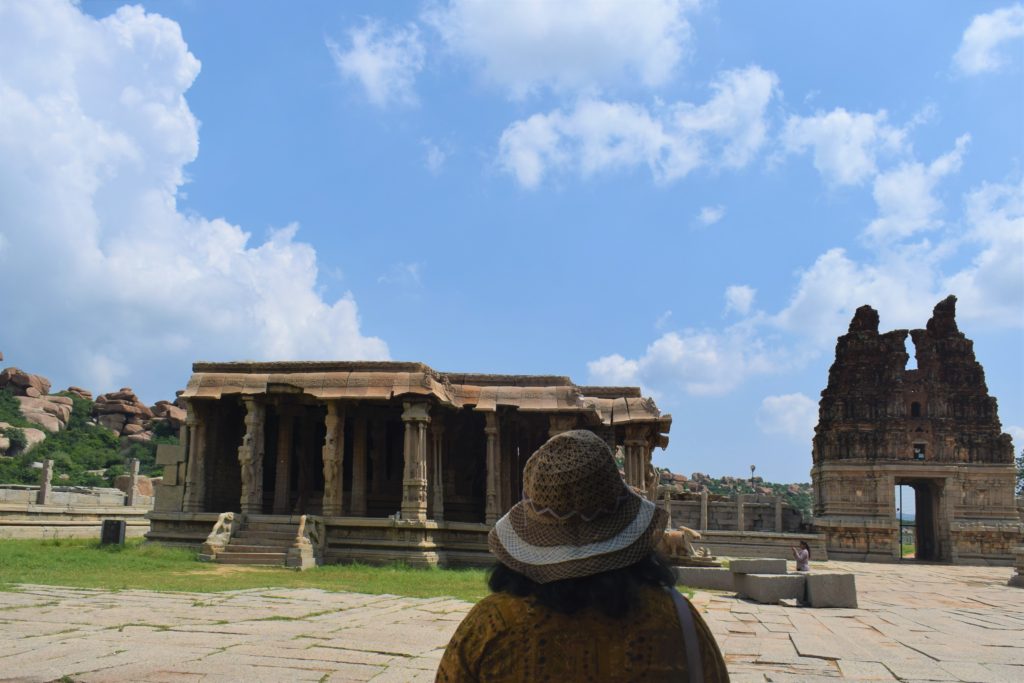
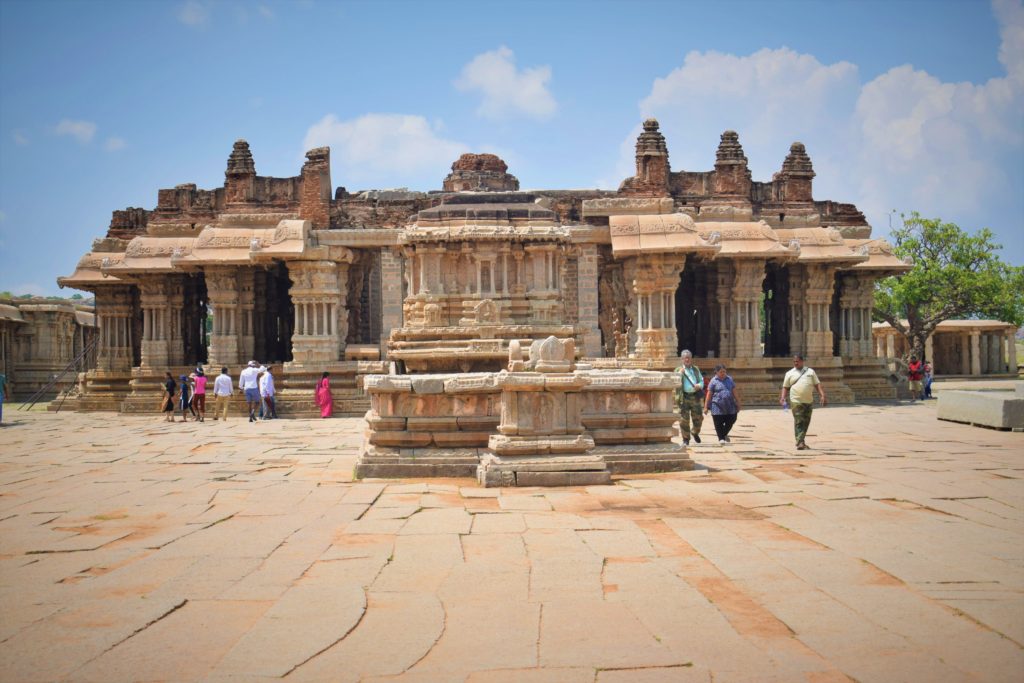
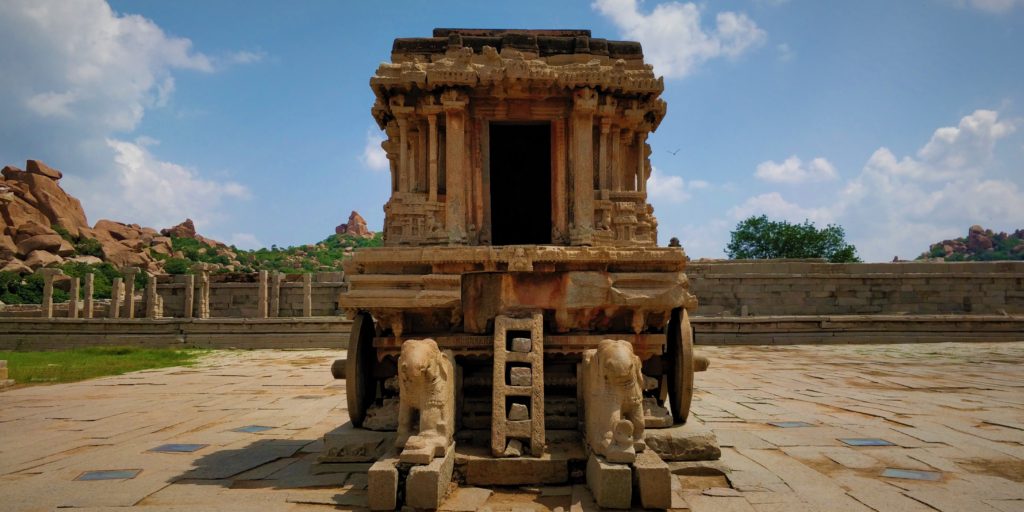
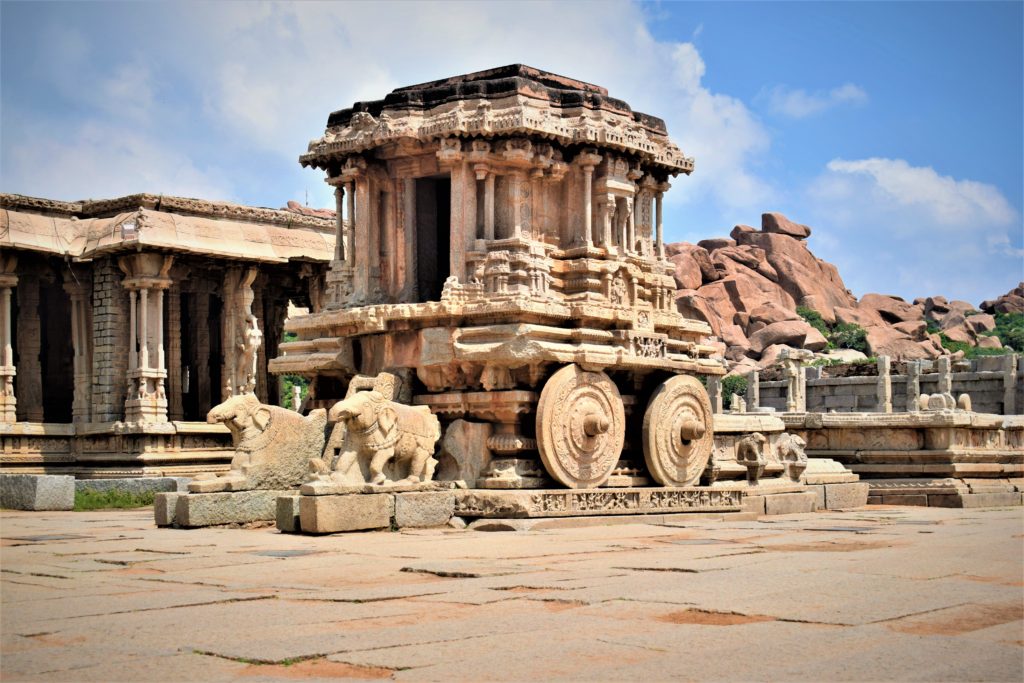
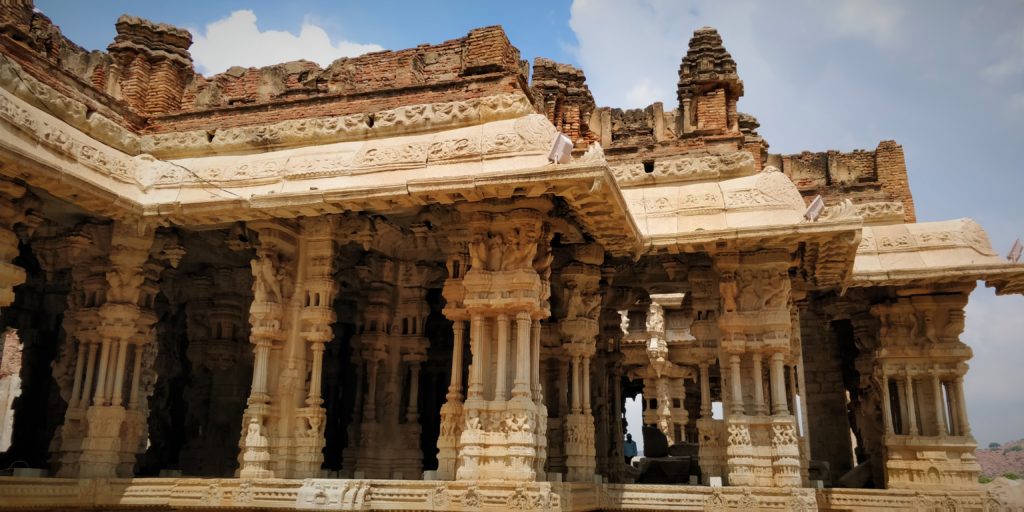

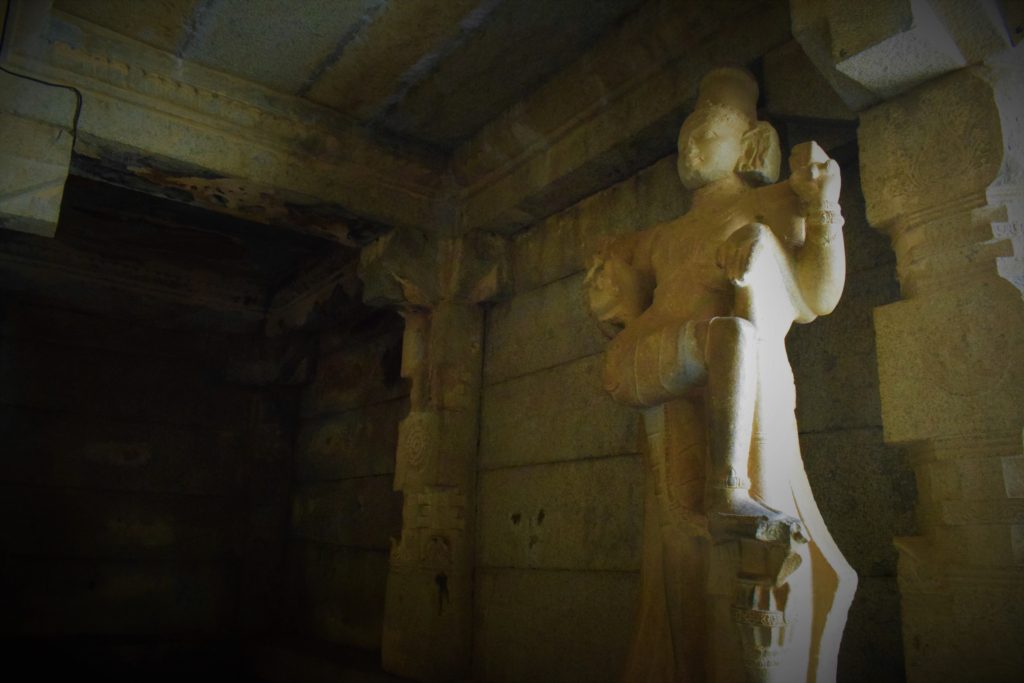
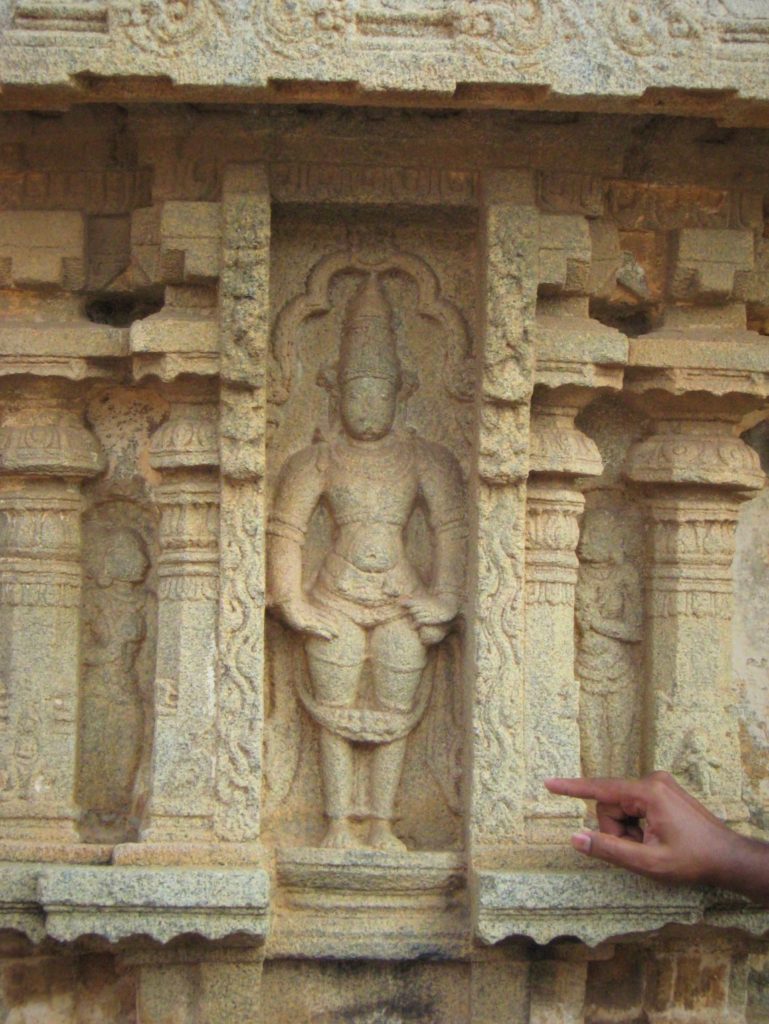
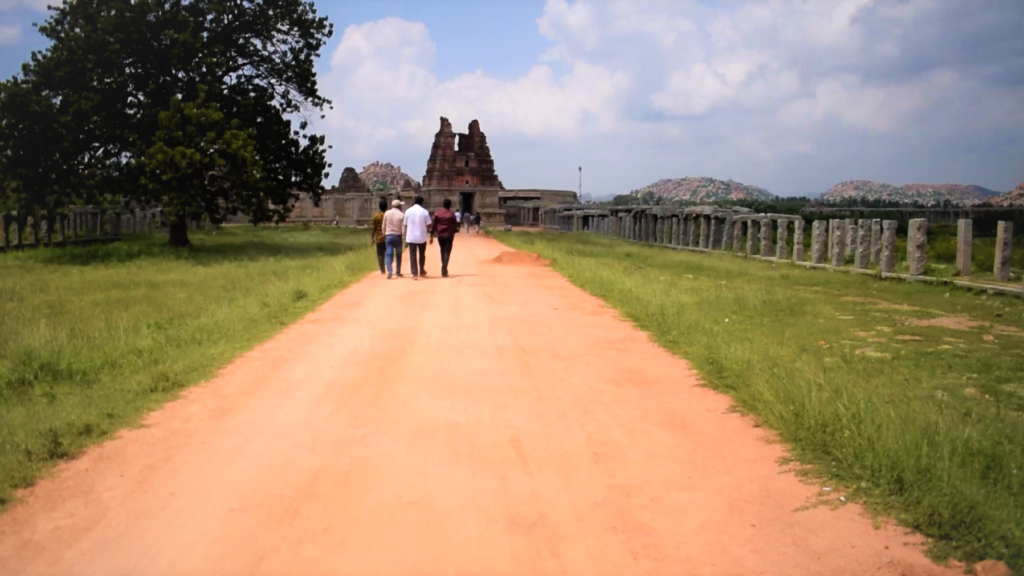
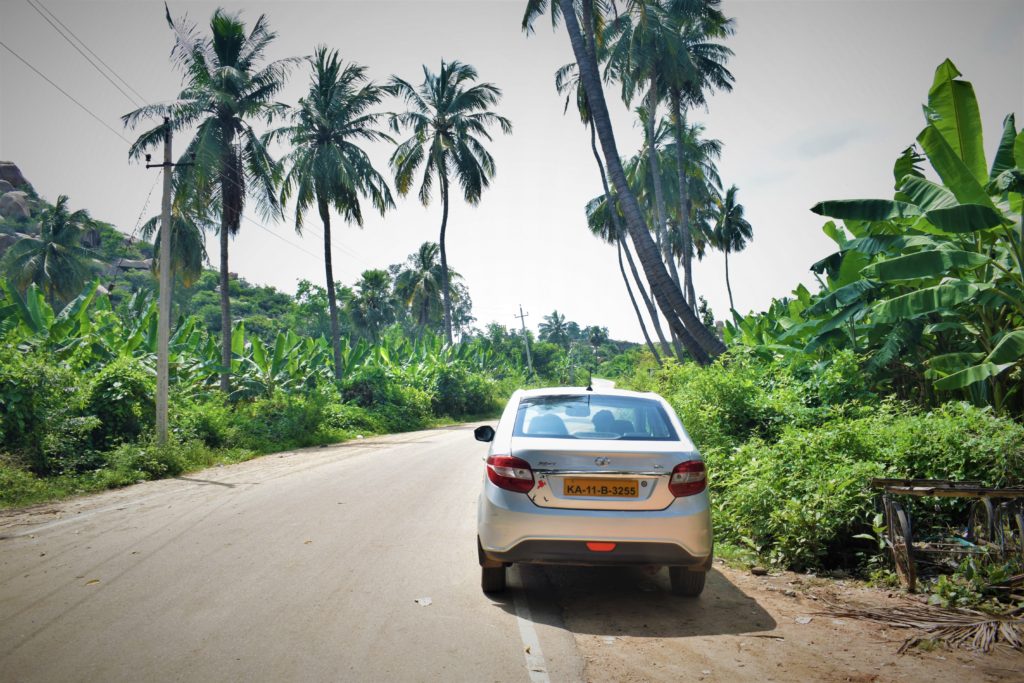


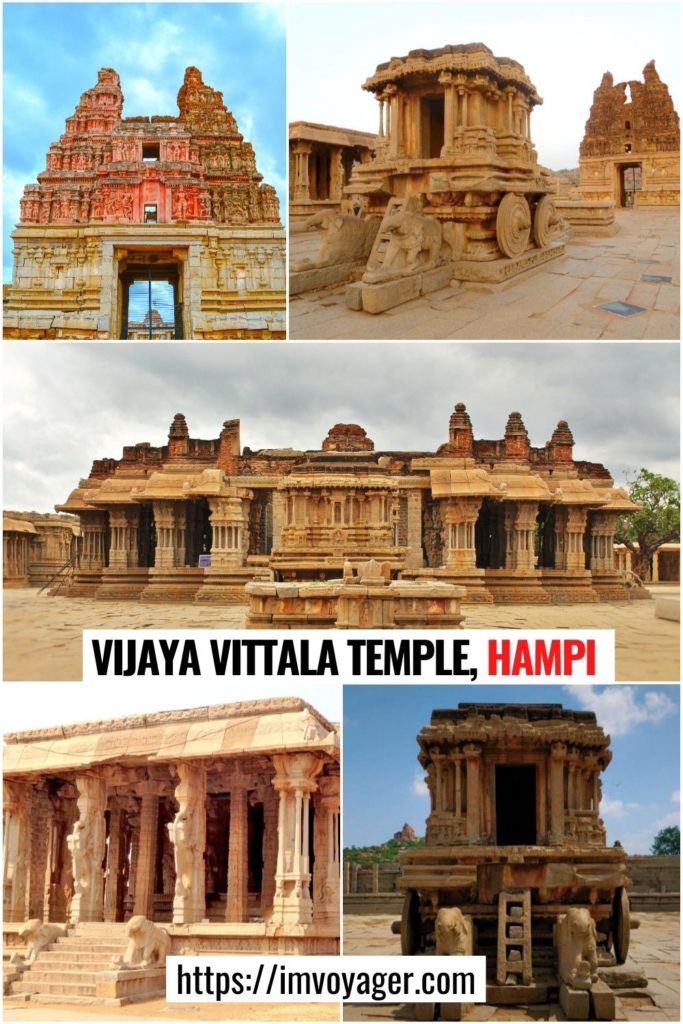
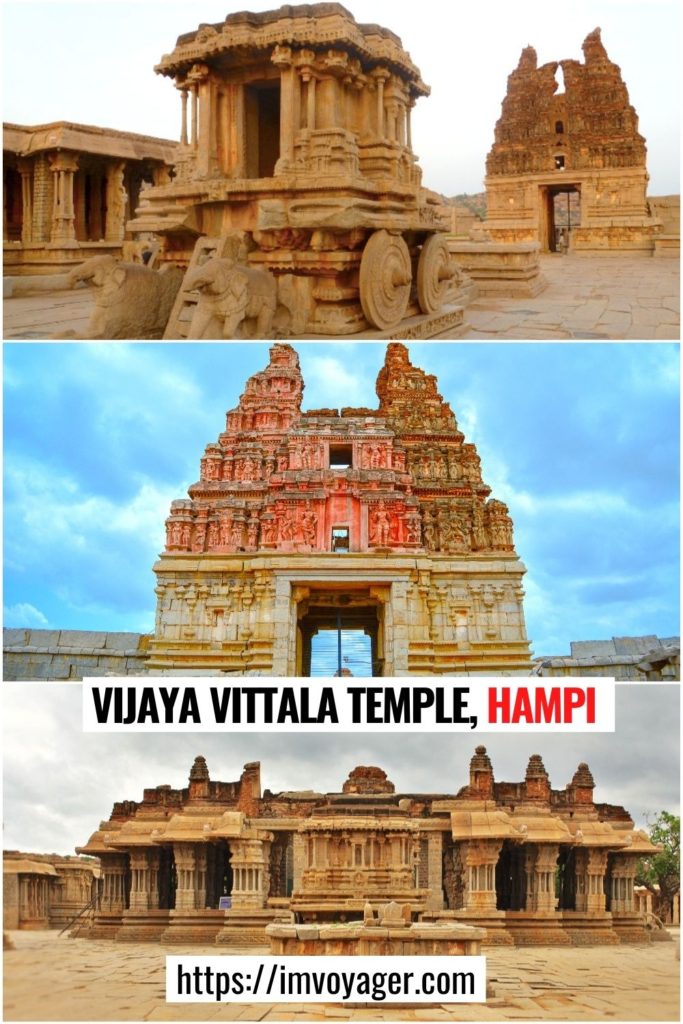




These are all such stunning temples. I hope to be able to see some in person one day.
I love how much history there is there. I would love to go with my family one day.
That is a really interesting history. It’s amazing that the temple stood the test of time!
Oh wow, this must have been impressive to go see. The stone work is quite incredible. So much detail!
The artistry in all of the structures is awe inspiring, the history, the stories and the visual art is amazing.
Exhaustive information.
The architecture and the level of detail is amazing. I, in particular, like the stone chariot.
Do you know when and why the site was destroyed?
What a great temple! And I love you described the place. Great read.
This looks like a wonderful experience. I would love to visit.
India is a very wonderful place. I always wanted to bring my family there. I wanted to explore their historical places. Also people in India are very kind. I hope we can visit soon there.
India is a very beautiful place. I always wanted to bring my family and visit their historical and famous places. People there are very kind. I hope we can travel there someday.
There is something so incredibly grand and majestic, yet at the same time spiritual about temples isn’t there? I love how the Vijaya Vittala temple has been built in the Dravidian temple architectural style. It’s very striking.
I’m so jealous! These pictures are absolutely breathtaking. I will be adding this to my bucket list for sure.
SO I don’t know which part I would be more excited to see, the Stone Chariot or the Musical Pillars in Vijaya Vittala Temple! Both are truly amazing works of art. It saddens me that they don’t play the pillars anymore. You would think that they could at least play them once a day or so by a trained professional curator so visitors can witness the magic and beauty of such a creation. I understand the need to preserve them but instruments are meant to be played.
India is such a beautiful country that I need to discover. Thank you for these info!
Wowza!! The carvings and sculptures in Vijaya Vittala temple are incredible, especially the stone chariot of Hampi. It must have taken soooo long to carve, but it looks like it could ride off into the sunset like a real chariot!
Fabulous post Sandy!
Hampi is a beautiful place, I would love to visit the musical temple sometime to experience the music myself. I have heard so much about its architecture, which tempts me to experience it sometime in the near future.
History and Architecture both fascinate me, I really enjoyed my virtual tour to Hampi temple. I agree with you that the chariot has its similarity with the Konark one.
This is on my bucket list. I really would like to see Hampi in 2021. And your post is so informative. The Musical Pillars sound so interesting.
What a detailed description. The pictures and the temple both are tempting me to make a plan for a trip there.
Southside temples always attract me with their beautiful sculptures. Had a big wish to visit this place. Thanks for the information.
Wow !! You have well explained the historical sites. Never get a chance to explore south but your explanation made a thought on my mind.
Wish I could have visited all the places that you have mentioned this year.
But we have some awesome plans next year hoping to visit them soon 🙂
This fabulous temple is more famous for the iconic stone chariot. Vittala Temple is the most extravagant architectural showpiece of Hampi. Great thoughts.
Hampi is for sure the best place for those scenic temples. The architecture is beautiful and stunning. I feel like visiting it right now 🙂
Hampi has always been our special Heritage site. And the vitthala temple is exquisite in its own right.
Hampi is on my bucket list for a long time. This place looks so beautiful and I loved reading about your travel experiences.
I live to visit temples and this one looks so old. I would love to visit this whenever I visited Karnataka, thanks for sharing.
Everyone seems to be sharing all their travel tales, and amazing pictures which is making me wanderlust. After reading your blog, I realized if I want to understand ancient India, then visiting it is a must. My travel list is growing longer by the day. Thanks for your amazing travel guide and your photos are mind-blowing.
I was in love with the stone chariot when I visited Vijaya Vittala temple. Such detailed work and absolutely stunning. I have been to Hampi only twice and would love to go there again. Maybe a trip for the next time I am in India.